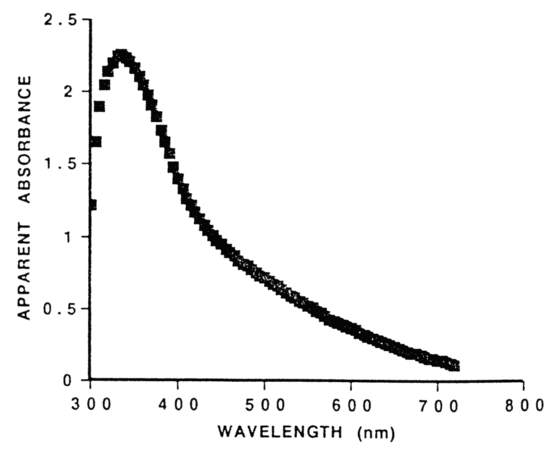Absorption spectrum of melanin

In the near infrared wavelengths of light used for iris recognition
(700nm - 900nm), iris pigmentation and apparent colour in the visible
band (400nm - 700nm) play almost no role. The peak absorption of
human melanin pigment occurs around 335nm, and absorption is almost
completely attenuated for wavelengths longer than 700nm. The reflectance
of the iris is quite constant over the 700nm - 900nm band, although the
iris looks much brighter in video images acquired in the longer wavelengths
simply because the sclera and skin are much darker (less reflective) in
those wavelengths, and so the camera gain setting tends to increase.
Pigmentations in the iris itself, including freckles and the blotches
sometimes caused by drug treatments for glaucoma (latanoprost and other
prostoglandin analogues), are largely invisible in the near infrared
wavelengths used for iris recognition and thus do not affect the IrisCode.
Data sources:
"The spectroscopy of human melanin pigmentation," by
N. Kollias. In: Melanin: Its Role in Human
Photoprotection, pp. 31 - 38. Valdenmar Publishing Co. (1995).
"Optical properties of human sclera, and their consequences for transscleral
laser applications," by A. Vogel, C. Dlugos, and R. Nuffer,
Lasers in Surgery and Medicine 11(4),
pp. 331 - 340 (1991).
"The incidence and time-course of latanoprost-induced iridial
pigmentation as a function of eye color," by P. Wistrand, J. Stjernschantz,
and K. Olsson, Survey of Ophthalmology 41(S2), pp. S129 - S138
(1997).
Back to Main Page.
